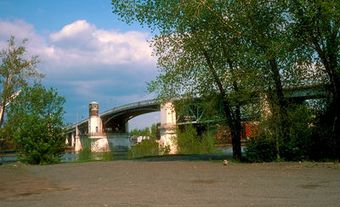Val-des-Monts
Val-des-Monts, Qué, Municipality, pop 7842 (2001c), 7231 (1996c), 5551 (1991c), area 435.57 km2, inc 1975 following the legislative amalgamation of the municipalities of Wakefield-Partie-Est, Portland-Ouest and Perkins, is located about 20 km northeast of HULL on the north bank of the OTTAWA RIVER. It is a typical Laurentian foothills cottage community known for its numerous lakes, McGregor Lake especially, and for the Laflèche Caves, located in the Saint-Pierre-de-Wakefield sector of the municipality. The name, meaning "valley of mountains," is descriptive in nature. Since the late 1980s the urbanization process has had a major impact on the Templeton and Wakefield segments of Val-des-Monts. Cottages have been turned into permanent residences and cottagers, who used to be in the majority, have lost out to full-time citizens.
At the outset, the area (Templeton, Wakefield and Portland townships) had been settled by Americans and those of British descent. The village of Perkins, for instance, recalls the role played by John Adams Perkins, who built a sawmill (around 1845) on Rivière Blanche, the site of this village in Templeton Township. The population was predominantly English-speaking until around 1900. It is now predominately French-speaking (82%, 1996c).
A few farms still dot the landscape but the manufacturing and service sectors now dominate the economy. Similar to other Outaouais communities, a large percentage of the work force is made up of civil servants working for the federal or provincial governments.

 Share on Facebook
Share on Facebook Share on X
Share on X Share by Email
Share by Email Share on Google Classroom
Share on Google Classroom

